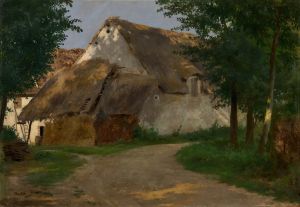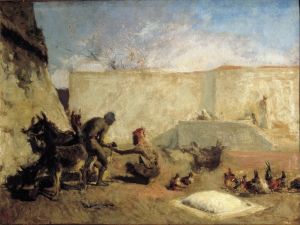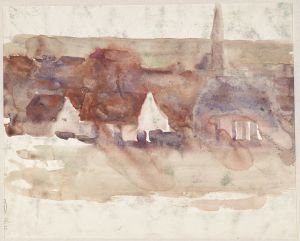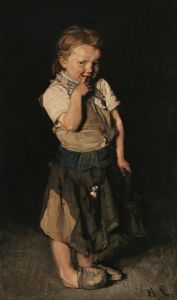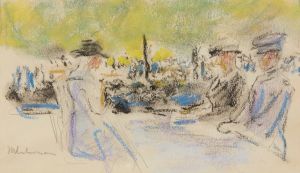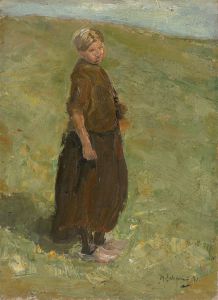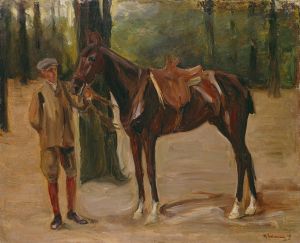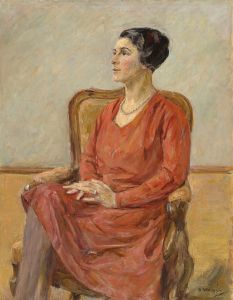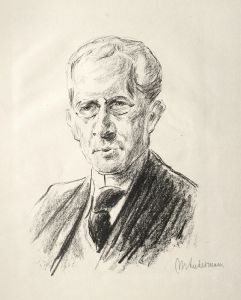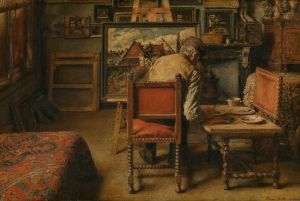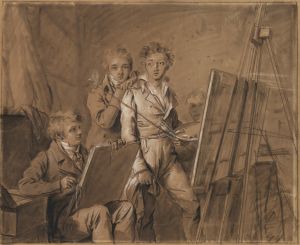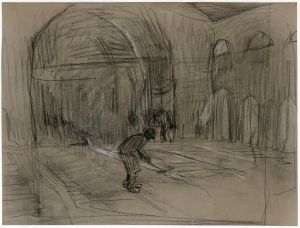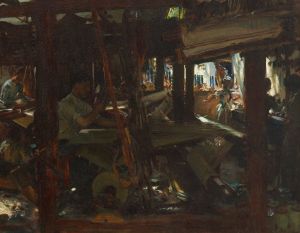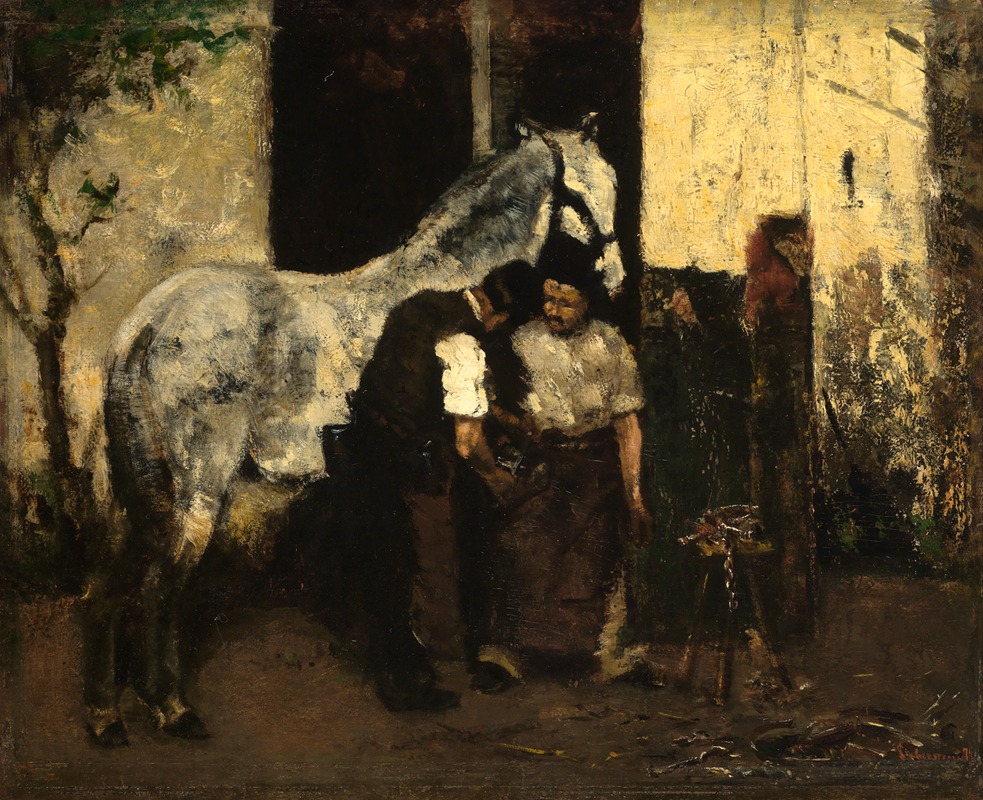
Beim Hufschmied
A hand-painted replica of Max Liebermann’s masterpiece Beim Hufschmied, meticulously crafted by professional artists to capture the true essence of the original. Each piece is created with museum-quality canvas and rare mineral pigments, carefully painted by experienced artists with delicate brushstrokes and rich, layered colors to perfectly recreate the texture of the original artwork. Unlike machine-printed reproductions, this hand-painted version brings the painting to life, infused with the artist’s emotions and skill in every stroke. Whether for personal collection or home decoration, it instantly elevates the artistic atmosphere of any space.
Max Liebermann was a prominent German painter and printmaker, associated with the Impressionist movement. He was a leading figure in the Berlin Secession and played a significant role in the development of modern art in Germany. One of his notable works is "Beim Hufschmied" (translated as "At the Blacksmith"), which exemplifies his interest in capturing everyday life and labor.
"Beim Hufschmied" was painted in 1881, a period when Liebermann was increasingly interested in depicting scenes of rural and working-class life. This painting reflects his fascination with the honest labor of ordinary people, a theme that was prevalent in much of his work. The painting portrays a blacksmith at work, shoeing a horse, surrounded by the tools of his trade and the rustic environment of a smithy.
Liebermann's style in "Beim Hufschmied" is characterized by loose brushwork and a focus on natural light, which are hallmarks of the Impressionist movement. However, unlike some of his French contemporaries, Liebermann's palette is more subdued, often employing earth tones and a more restrained use of color. This approach lends a sense of realism and gravity to his depictions of laborers, emphasizing the dignity and importance of their work.
The composition of "Beim Hufschmied" is carefully constructed to draw the viewer's eye to the central action of the blacksmith and the horse. Liebermann's attention to detail is evident in the rendering of the blacksmith's muscular form and the textures of the horse's coat and the surrounding environment. The play of light and shadow in the painting adds depth and dimension, enhancing the realism of the scene.
Liebermann's choice of subject matter in "Beim Hufschmied" reflects his broader interest in social themes and the lives of the working class. During this period, he was influenced by the realist works of artists like Gustave Courbet and Jean-François Millet, who also depicted scenes of rural life and labor. Liebermann's work, however, is distinguished by its Impressionist technique and its focus on the effects of light and atmosphere.
"Beim Hufschmied" is part of a larger body of work by Liebermann that explores similar themes. His paintings often depict scenes from everyday life, such as farmers at work, women in gardens, and children playing. These works are celebrated for their ability to capture the beauty and dignity of ordinary people and their activities.
Max Liebermann's contributions to art extend beyond his paintings. As a leader of the Berlin Secession, he advocated for artistic freedom and the acceptance of modern art in Germany. His influence helped pave the way for future generations of artists, and his work remains an important part of the history of German art.
"Beim Hufschmied" is a testament to Liebermann's skill as a painter and his commitment to portraying the realities of life with honesty and empathy. The painting continues to be appreciated for its artistic merit and its insightful depiction of a moment in time, capturing the essence of a blacksmith's labor with both realism and sensitivity.






